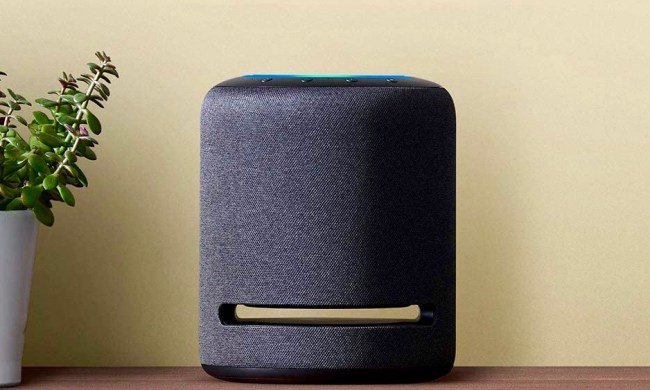The Apple HomePod mini is finally official after being introduced to the world at today’s Apple event. Its release marks the potential rise of Siri in the ever-evolving smart home, and paves the way for consumers to further embrace the speaker, especially given how the original carried a premium price. Don’t let its smaller size fool you, though — it packs quite a punch at just $99, a price that makes it significantly easier for people to welcome Siri into more homes.
First, let’s talk about the new design. It’s a stark departure from the original HomePod, with a more spherical shape. The top has been shaved off a bit to accommodate a touch panel for various media playback controls. There’s also an LED ring that will turn on whenever Siri is accessed. The HomePod mini’s spherical shape looks similar to the new Amazon Echo smart speakers announced not too long ago, and the mesh fabric that wraps the unit gives it an interesting look.

Under the hood, it’s powered by Apple’s S5 chip, and the compact smart speaker delivers 360-degree sound no matter where it’s at. While Apple didn’t share the details around the speaker driver that’s powering the HomePod mini, you can be assured that audio performance is at the top of the list. Based on the price, it’s certainly not expected to deliver the same level of performance as the original, but it should compete against the likes of the Google Nest Audio. There’s even the option to achieve stereo output by pairing two units together for even more audio power.
With Siri on board, the HomePod mini also receives enhancements that allow it to recognize different voices. Controlling the smart home is going to be more convenient than ever before, as the mini appears to act as a home hub for HomeKit-compatible devices, making it a far more attractive option than the original HomePod, Apple TV, or iPad. There’s also deep iPhone integration with the HomePod mini, which allows users to place their iPhone within close proximity to the speaker to let them know some of the details about what the speaker is playing.

Three years after Apple introduced its smart speaker, this follow-up stands a better chance of succeeding. It brings all of Siri’s smarts in terms of controlling HomeKit-enabled devices, while retaining a strong focus on audio performance. It follows the announcements of other recent smart speakers like the Amazon Echo (4th Gen) and Google Nest Audio.
The HomePod mini’s arrival comes at a critical point for Apple, mainly because HomeKit has trailed its rivals in the smart home space. Its $99 price may help give it broader appeal that will help Siri better compete against other smart assistants in the smart home. It will be available in two colors, white or black, with pre-orders going live starting on November 6 and shipping beginning on November 16. And finally, don’t forget all the Apple deals right now happening for Amazon Prime Day.



